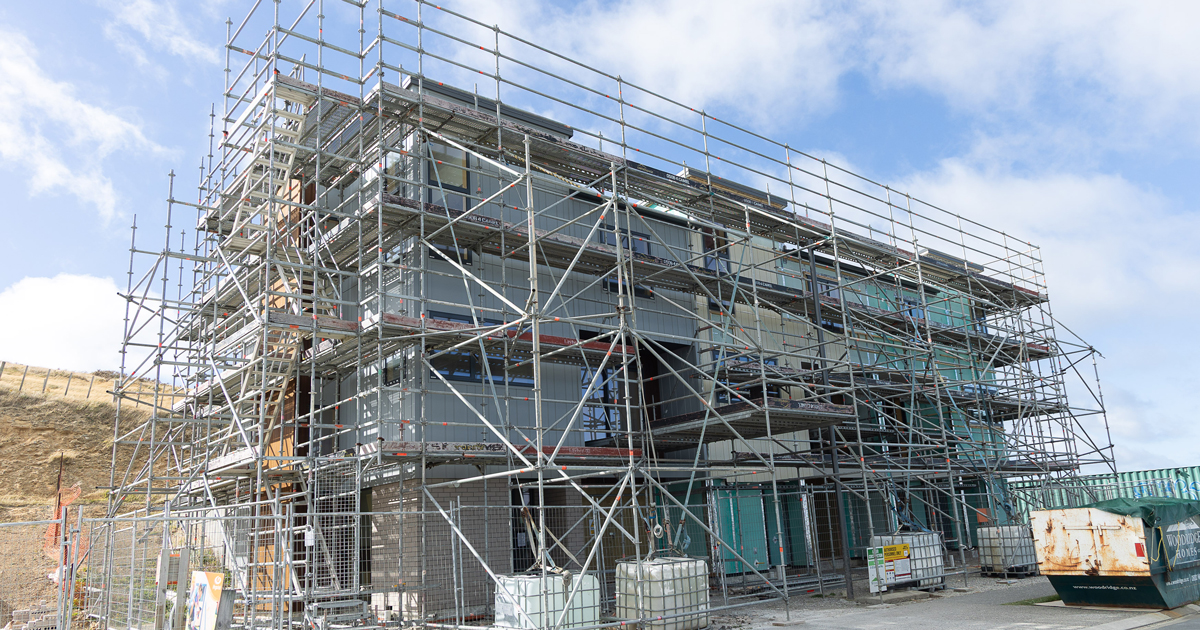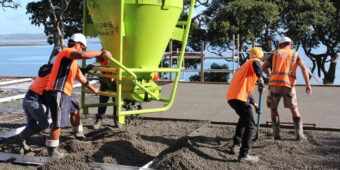Scaffolding and Prequalification Rules Set for Overhaul
08 Aug 2025, Govt Announcements, Govt Consultations, Health & Safety, Industry News, Regulatory

The Government is seeking industry feedback on proposed health and safety reforms to clarify working-at-height requirements and streamline prequalification processes
The proposals, led by Workplace Relations and Safety Minister Brooke van Velden, are designed to support “safe and more efficient” practices by cutting red tape and reducing compliance costs for businesses.
“Over-compliance needlessly drags down construction productivity, increasing building time and costs for the sector, and impacting new builds and Kiwi homeowners,” she said.
Risk-based scaffolding rules
The Government stated existing regulations have led to widespread overuse of costly scaffolding, even in situations where it is not required for safety.
A new risk-based approach is proposed for working at height. Officials are refining options for a new hierarchy of controls to guide when scaffolding, ladders or harnesses should be used, based on the actual danger involved.
“Changes will ensure scaffolding use is better aligned with the level of risk,” said van Velden.
The scaffolding certificate of competence categories and associated fees are also under review. These set out what level of scaffolding work a person is qualified to perform.
This review follows concerns from industry that practical experience is not always recognised and that formal qualifications do not always reflect a worker’s actual competency.
“After consultation, I will be seeking Cabinet approval to update the categories and fees to ensure they better reflect current costs and industry best practice,” said van Velden.
Revised prequalification guidance
The Government said many construction businesses are burdened by repeated and inconsistent prequalification checks. Some have reported turning down clients as the cost of getting prequalified outweighs the value of the job.
A prequalification check helps builders demonstrate to main contractors or principal organisations that they have commitment to good health and safety practices.
“A lack of consistency across providers means that suppliers need to get a new prequalification for every job they tender for,” van Velden said.
“Businesses feel like they have to jump through hoops to tick a compliance box, even though the prequalification often involves little reflection of the real-world risks workers face.”
WorkSafe has been instructed to review prequalification guidance in collaboration with industry. New free-to-use national templates are being developed to improve consistency and cut down on repeated paperwork.
Unclear obligations around shared site responsibilities have also contributed to excessive reliance on prequalification processes.
These situations arise when multiple businesses, such as builders and drainlayers, are jointly responsible for managing health and safety risks on the same site.
WorkSafe is preparing an Approved Code of Practice (ACOP) to clarify how overlapping duties should be managed, with the aim of reducing unnecessary prequalification and improving coordination between businesses.
Experts say reforms overlook real risks
The consultations form part of a broader health and safety reform programme led by Minister van Velden, which some industry groups have criticised as too narrow.
Mike Cosman, chair of the New Zealand Institute of Safety Management (NZISM), said the reforms are focused on “costs to businesses of prevention and not the much greater costs of harm”, which he estimated at more than $4.9bn a year.
NZISM says that 50-70 people a year die in workplace accidents in New Zealand.
“Minister van Velden had ignored advice from employers, workers and experts,” Cosman said. “The Government has missed a golden opportunity to improve our poor health and safety performance.”
Register to earn LBP Points Sign in



